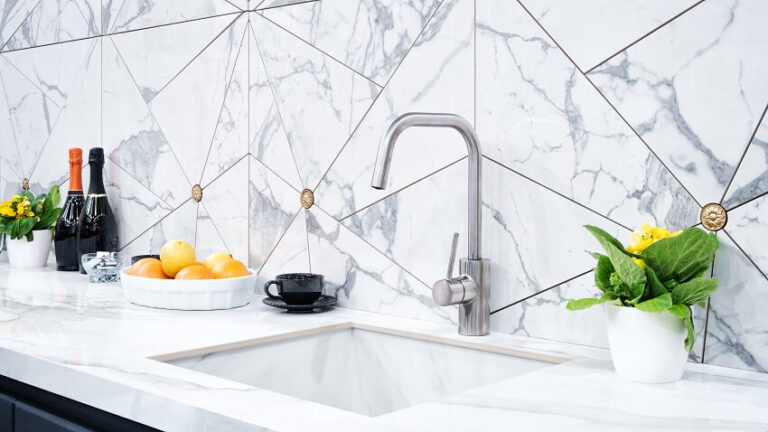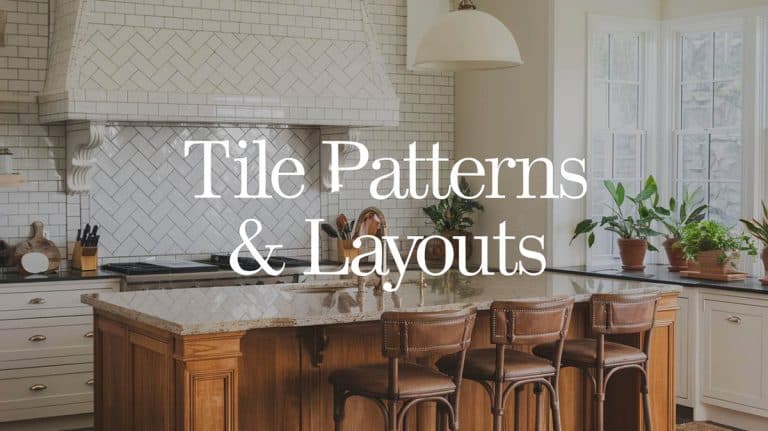Terracotta Floor Tiles (Design Types & Pros and Cons)
This design gallery showcases terracotta floor tiles, including what it is, their characteristics, edge profiles to consider, glazed & unglazed tiles, and the pros & cons of terracotta tiles.
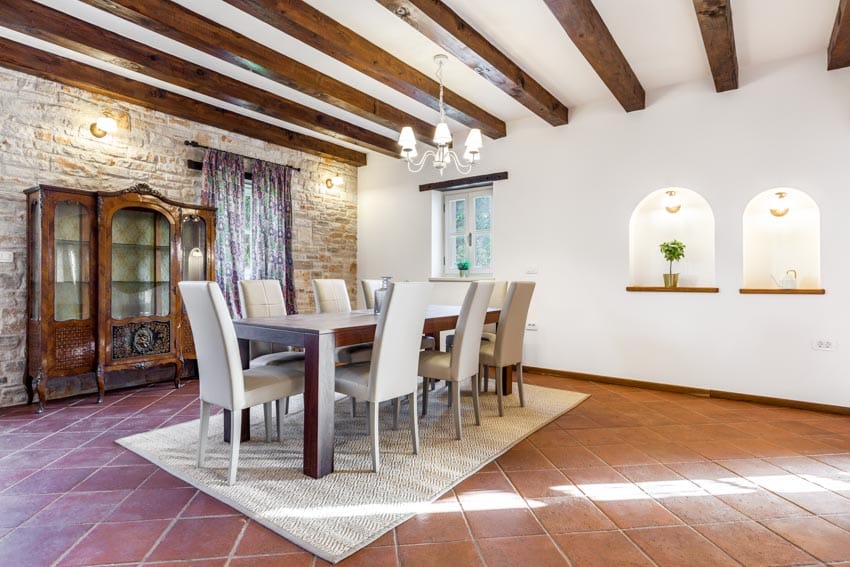
Besides being used to create an artistically realistic army or to build roofs in space, terracotta can also be used as flooring tiles. While terracotta may be a thing of the past created from the perfected millennia-old technique, its popularity today is rising again, especially with the rising trend of overhauled homes with earthy and rusty tiles.
What Is a Terracotta Tile Floor
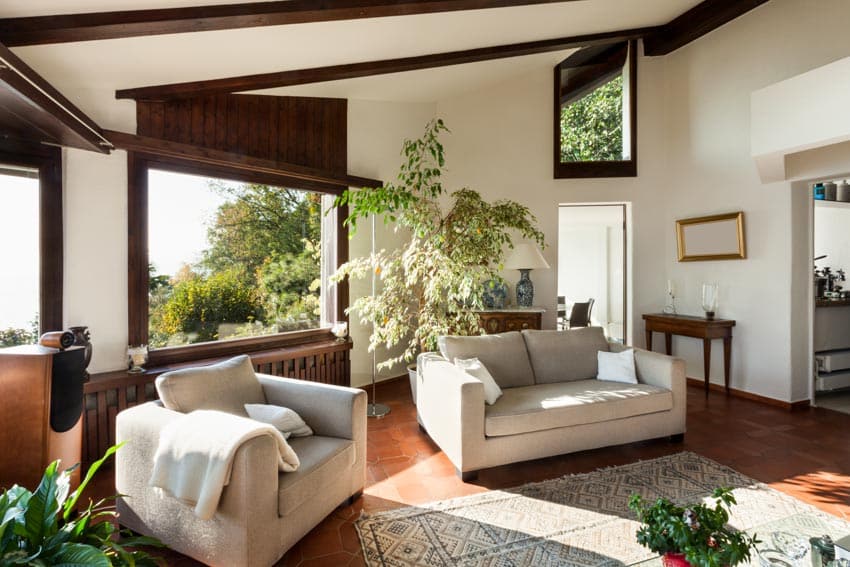
Some trace it to around 10,000 years B.C. in China. It was in the 14th century and at the end of the Roman Empire that the popularity of terracotta tiles also declined. 15th-century Europe, primarily in Italy and Spain, brought it back again in full force.
From there, it was used in a variety of ways, from turning into medallions to being used as decor until it slowly declined because of the rise of porcelain tiles.
With an old-world charm and rustic vibe, terracotta became a favorite for many homeowners because of its unique and historical aesthetics. Considering many remnants of the past in terracotta still exist, it can definitely last for a long time as long as it’s taken care of properly and diligently.
And if you’re actually considering terracotta tiles as you spruce up your own, make sure to explore everything there is about it since it’s more than just a symbol of the old world.
Characteristics of Terracotta Floor Tiles
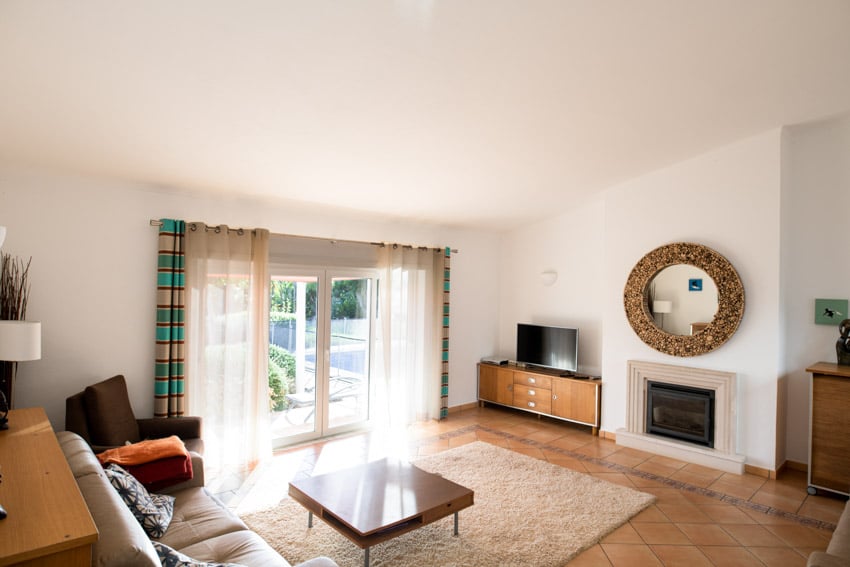
To understand terracotta tiles better, here are some components of terracotta that you have to know about.
• Widely varied durability: The durability of terracotta types of floor tiles is widely varied. These can get incredibly durable as their glazed and treated versions but can also be very fragile and easily crack in cold environments because of being unglazed and untreated.
• High water resistance with treatment and glazing: Similar to natural travertine, terracotta is porous and so requires sealing and glazing. And since this makes the tiles a bit slippery, make sure the floor has an anti-slip surface.

• Cost: Terracotta tiles cost around $3 to $7 per square foot, and having them installed by experts will set you back $1.25 to $2.90 per square foot more, so make sure you have enough in your budget for these amounts.
• Maintenance: With porous flooring materials like terracotta, sealing is the first step to accomplish. You can use a commercial sealer or linseed oil and turpentine solution, depending on your preference. Use beeswax for a shiny, protective finish.
• Installation: You can install your terracotta tiles if you’re dealing with machine-cut glazed ones, but unglazed and handmade ones need the delicate touch of experts.
Terra Cotta Tile Cuts To Consider
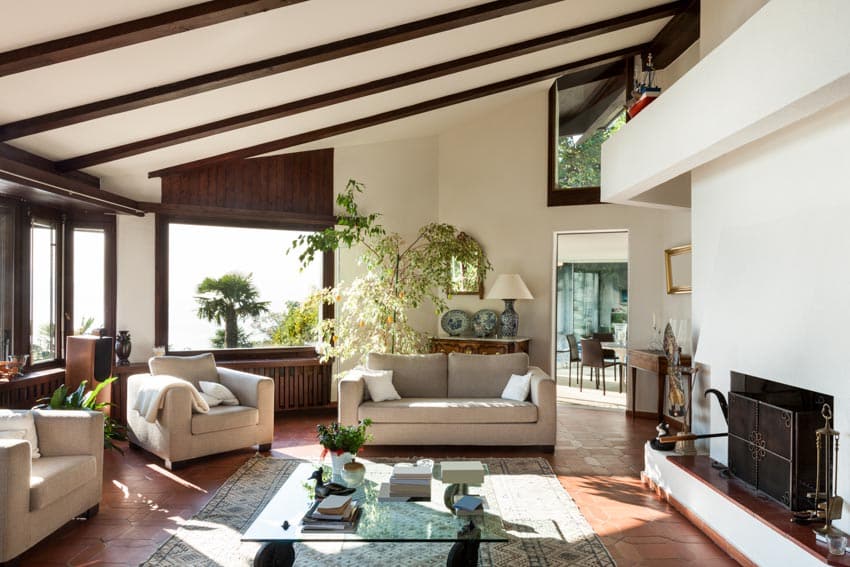
• Machine-cut: The most common of the two styles, machine-cut tiles are more cost-effective and consistent in terms of color and shape. More selection is available, and installation is easier because of their exact shapes.
• Handmade: Considered to be more delicate, handmade terracotta tiles are crafted by artisans’ hands and so will vary in shape and color.
Much more expensive and mostly found in the Mediterranean and in Mexico, these have unique shapes that make them a bit difficult to install and work with.
Pros and Cons of a Terracotta Tiled Floor

Pros of Terracotta Tile Floors
• Stunning earthy and rustic aesthetics
• Relatively affordable, so it won’t be painful to your pocket
• Widely varied in floor tile sizes, colors, designs, and textures
• Incredible resistance to wear and tear
• Extremely low maintenance
• Basic cleaning process (Mop, soap, and water)
• Eco-friendly, sustainable, and reusable
• Durable once sealed and glazed
• Versatile in designs and can be used for traditional, rustic, contemporary, and modern styles
Cons of Terracotta Tile Floors
• Porous and so can easily absorb water if left unsealed and unglazed
• Regular sealing is necessary
• Difficult to repair once the tiles are chipped or cracked
• Cold climate can lead the tiles to freeze and crack
• Installation for handmade tiles can be tricky because of their unique shapes
• Discoloration of the tiles is possible
Glazed Terracotta Brick Tiles
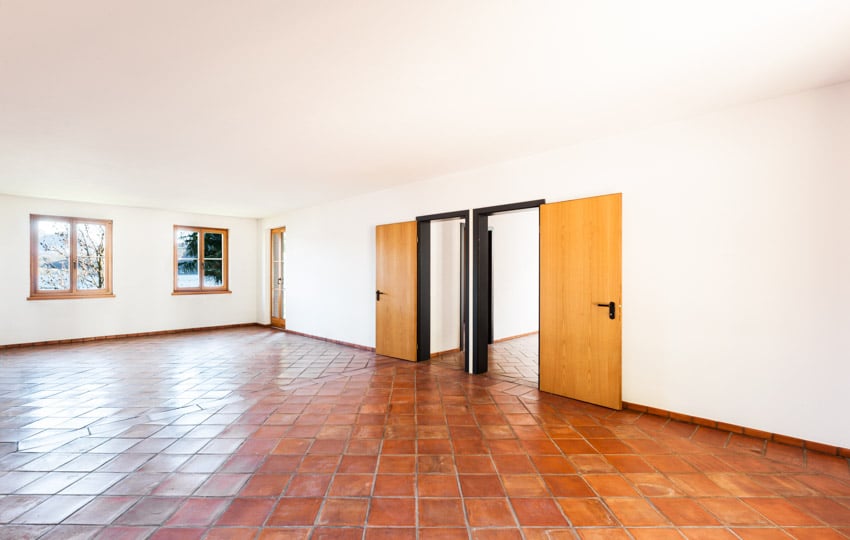
The protective coating gives the tiles a stunning glass-like surface and is applied to the second firing process. You can choose from a variety of glaze levels, including semi-glazed and high-glazed.
Glazed variety provide the following benefits to enjoy:
• Prevents mildew growth and staining
• Creates a waterproof surface
• Prevents possible water damage
On the downside, though, you also need to expect the following drawbacks:
• More expensive than unglazed terracotta tile flooring
• Hides the natural beauty of the terracotta
• Can be slippery and so requires a non-slip surface
Unglazed Terracotta Floor Tiling
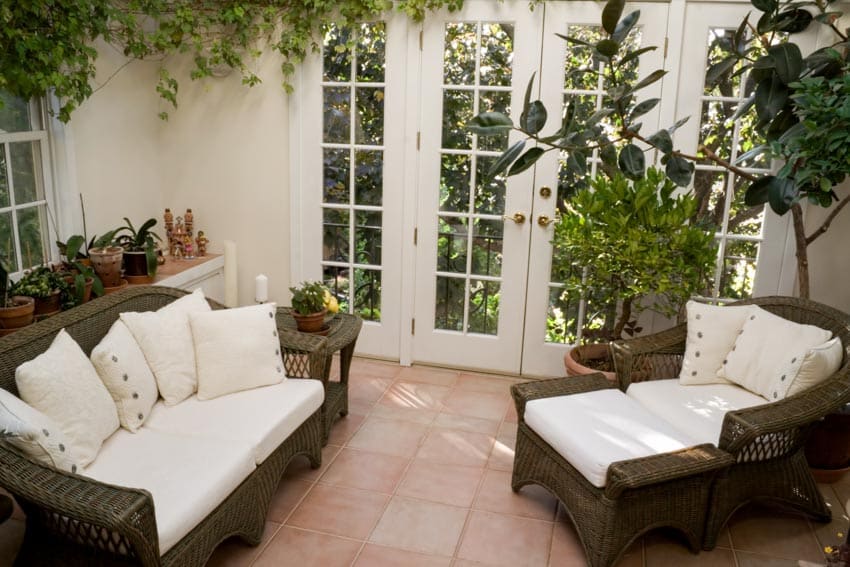
While you can opt to have unglazed terracotta tiling, make sure to still have the material sealed to have a level of protection against moisture. If left unsealed and unglazed, the terracotta will be in its most fragile and vulnerable version.
The reason why homeowners may prefer unglazed terracotta over glazed ones is due to the following benefits:
• Features a more natural and earthy look
• Less expensive
• Not slippery so won’t need to add a non-slip surface
Terracotta Porcelain Tile

It might be a bit of a challenge, though having to maintain authentic terracotta tiling, especially since you have to regularly seal them to protect them from moisture. This is not the case with porcelain, though.
With the advancement of ceramic product technologies, you can now get the best of both worlds by benefiting from the durability and low maintenance of porcelains and at the same time, the stunning and unique aesthetics of terracotta.
Terracotta Ceramic Tile

Similar to porcelain, ceramic tile flooring can now have the aesthetics of terracotta if you are not fond of the natural characteristics of terracotta.
Terracotta Tiles for Outdoor Spaces

There is a high chance that these will be subjected to daily wear and tear from weather elements, including wind and rain. If you want to make them last longer in your porch or garden, make sure to add all the possible protection. Sealing and glazing them will do exactly that.
Tile Designs for Terracotta

Considering you are thinking about using terracotta, this means you either like the splash of drama offered, or you’re into something rustic and nostalgic.
And while it’s true that terracotta has this old-world charm, it doesn’t mean that the designs are limited to traditional and rustic styles. To help you decide, here are some incredible designs to consider.
Terracotta Hexagon Tiles
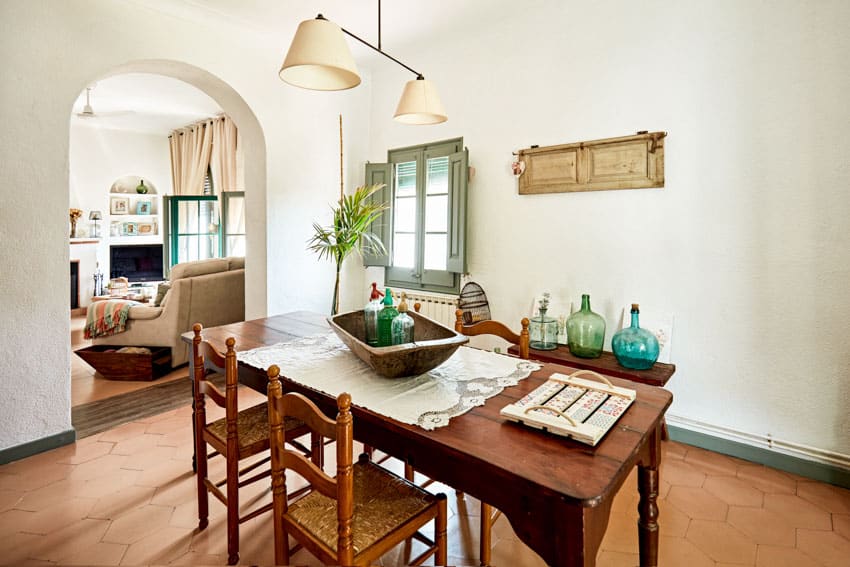
Installing them on your floor, whether in the living room or in the bathroom, features added aesthetic value as you put together the pieces of hexagon tiles.
While it may be considered traditional by many, you can turn it into a stylish and modern look by pairing it with mosaic tiles. The area where you install both styles will seem like an artistic display of shapes and geometric elements.
Terracotta Red Tiles
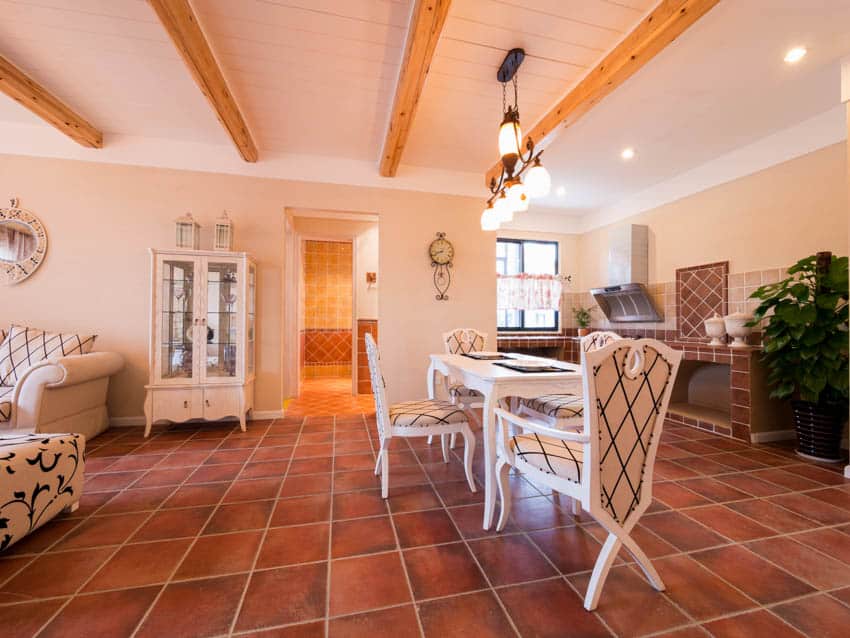
Pairing them will be a bit of a challenge since not everything will look good with red, but if authenticity is your priority, then the effort that it requires will be worth it. These classic tiles can even take you back to homes with clay roofs in Spain.
Terracotta Black Tiles
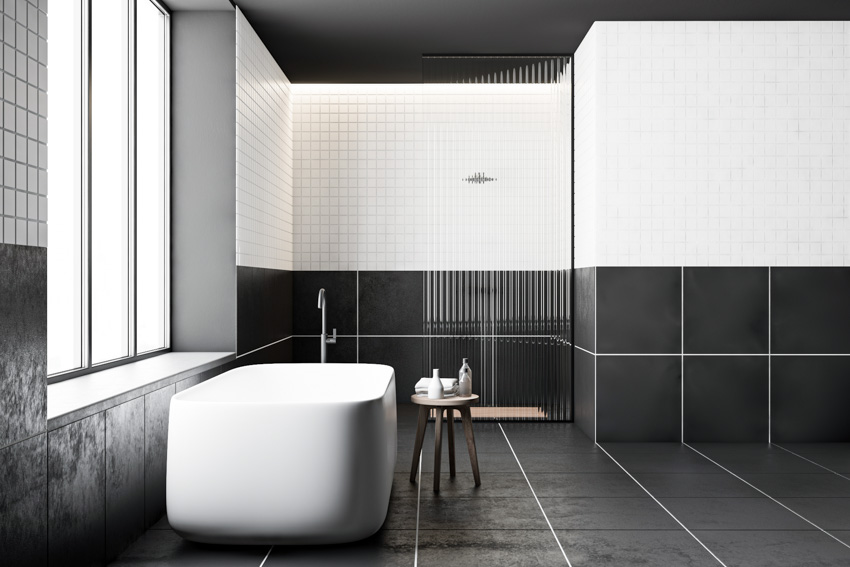
This tiling has this “blackened” and “burned” look that somehow looks both clean and rugged at the same time. They usually come with grouts with darker tones in color, matching the blackness of the tiles and giving them a uniform and deeper hue.
Terracotta White Tile

While not a common choice, white clay tiles are elegant to look at and so would elevate any space you choose to add them to.
The clean and canvas-like color will be more open to color and style matching. And so you won’t have to worry about choosing the right color to match the tiles with.
Terracotta-Made Hand Painted Tiles

Such tiles are the ones that came across the hands of talented artisans with years of creative experience and inspiration under their belts. And these years will clearly be reflected in the designs they paint over the tiles.
Besides the added aesthetics, hand-painted terracottas also have improved resistance to water and staining after the painting job. These tile pieces will feature a variety of colors depending on the artisan, but it also means that they might be a bit difficult to pair with when it comes to styling.
Terracotta Reclaimed Tiles
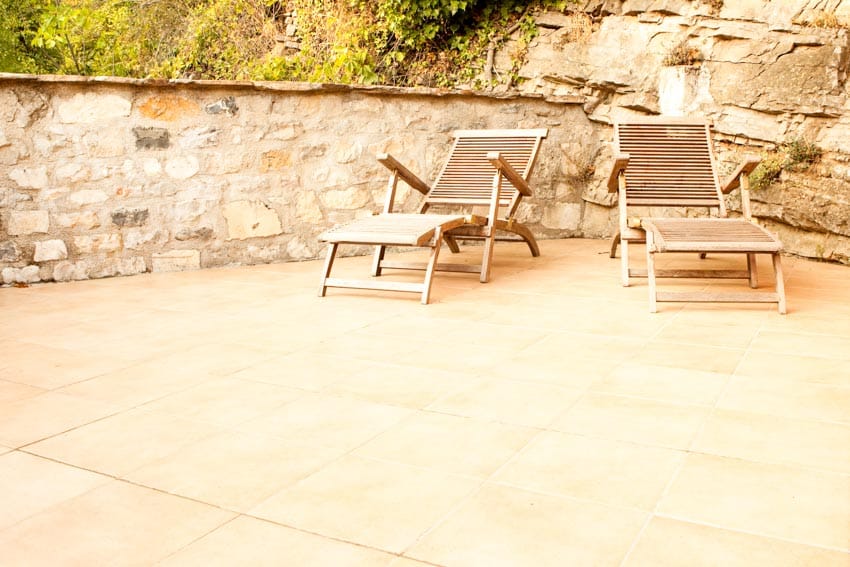
The best thing to do once you decide on reclaimed tiles, though, is to make sure that they are not damaged and to clean and polish them until they look brand new. Most of the tiles come from old buildings, so do not be surprised to find many imperfections in the tiles.
If you believe that these marks add character to the tiles, then this tiling is perfect for you. Make sure you’re aware, though that the maintenance and upkeep of these tiles may be expensive.
Terracotta Bullnose Tiles
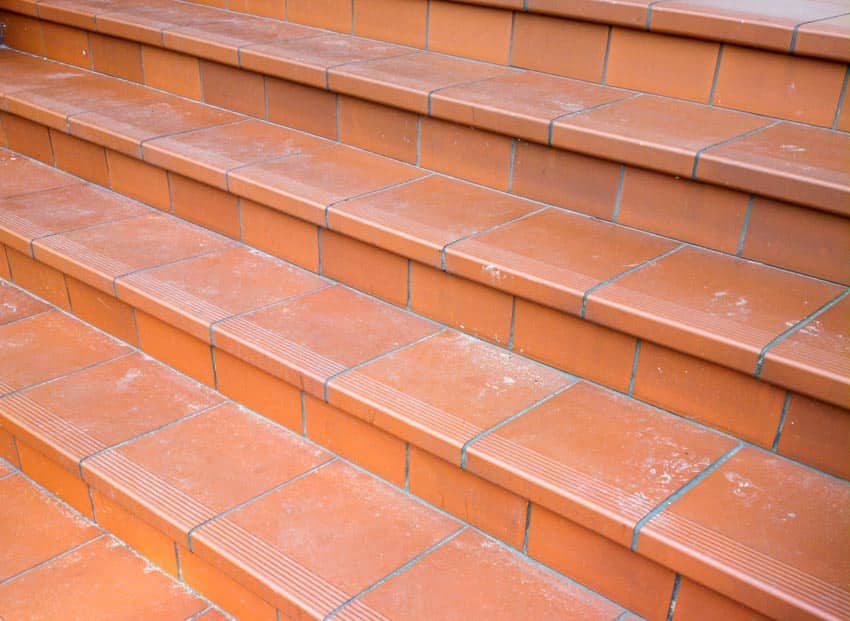
Whether you plan to use these tiles for your new kitchen island or rustic bathroom vanity, getting the tiles along with the bullnose edge profile with save you the trouble of having to work on the edge or paying someone to do it for you.
Since bullnose edge profile tiles come pre-made, you also won’t have issues about not doing them right and having the curves not balanced on other tiles.
Mexican Terracotta Type Tiles
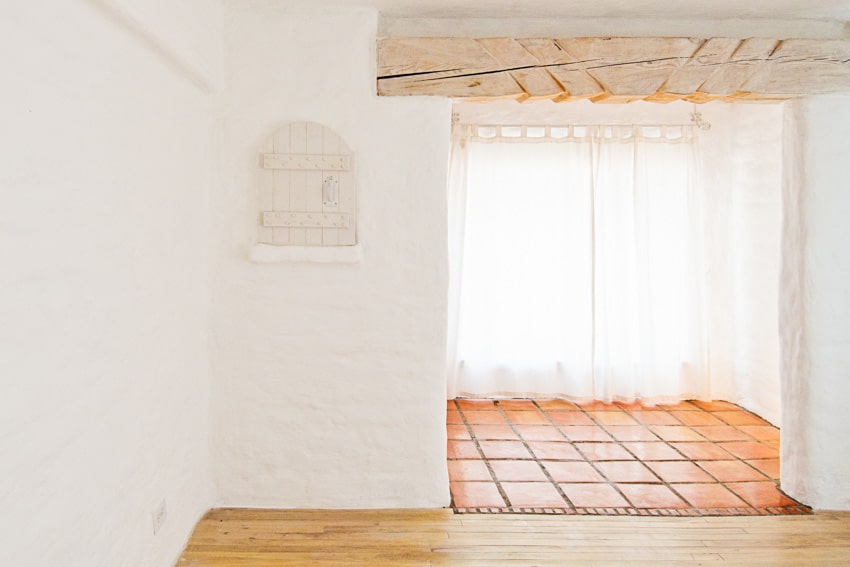
While they may have unique shapes, installing them will be quite a challenge. Mexican baked clay tiles are special and can even be considered collectibles. This is why they are also a bit more expensive than machine-cut tile pieces.
If you plan on installing Mexican clay tiles at home, hire a professional to do it for you since they require a bit of a complex installation process.
Modern Terracotta-Style Tiles
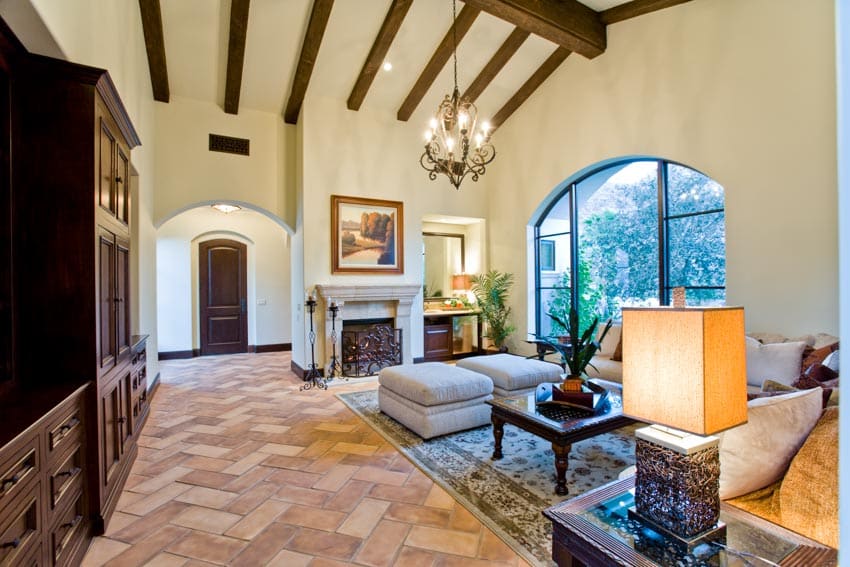
If you have a modern-style home, normally, this material will stand out due to its traditional and rustic aesthetics. This will be an entirely different matter, though, if you’re working with these tiles.
Where to Use Terracotta Clay Tiles
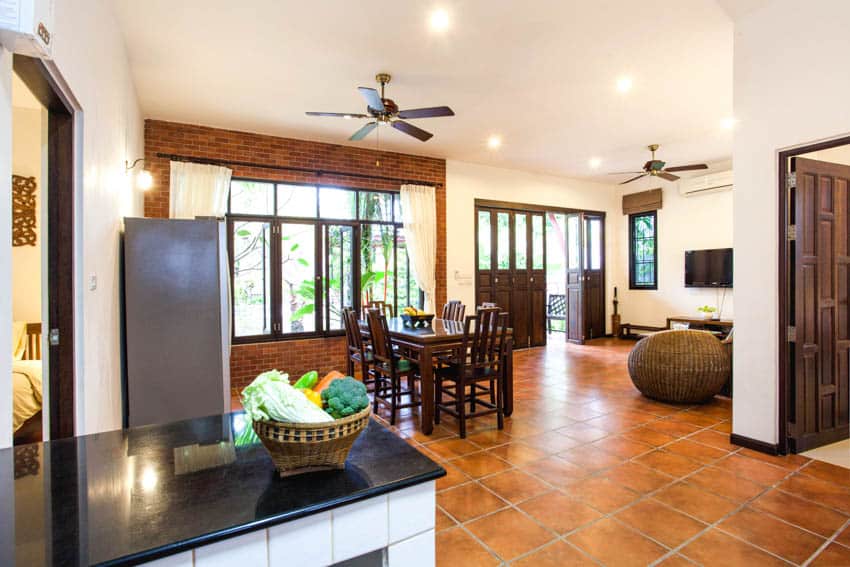
This is the reason why this material is recommended indoors rather than outdoors, for they would be subjected to weather elements. Freezing temperatures can lead to cracking.
These can be installed anywhere in your home, and you only need to match the style of the space you’re working on with the ambiance that this tiling is delivering.
Terracotta Kitchen Tile

And even if they are highly porous, they can still be installed in the kitchen. The trick is to seal and glaze to protect them from elements that can harm them.
This material will be a great addition to your kitchen, especially if you want your kitchen to have one of the following styles:
• Rustic style
• Farmhouse style
• Mediterranean style
Whether you plan to use tiles for your kitchen flooring or countertops, the material is durable enough for daily wear and tear. Make sure, though, that you seal and glaze them to maintain the high quality of the materials.
Terracotta Bathroom Tiles
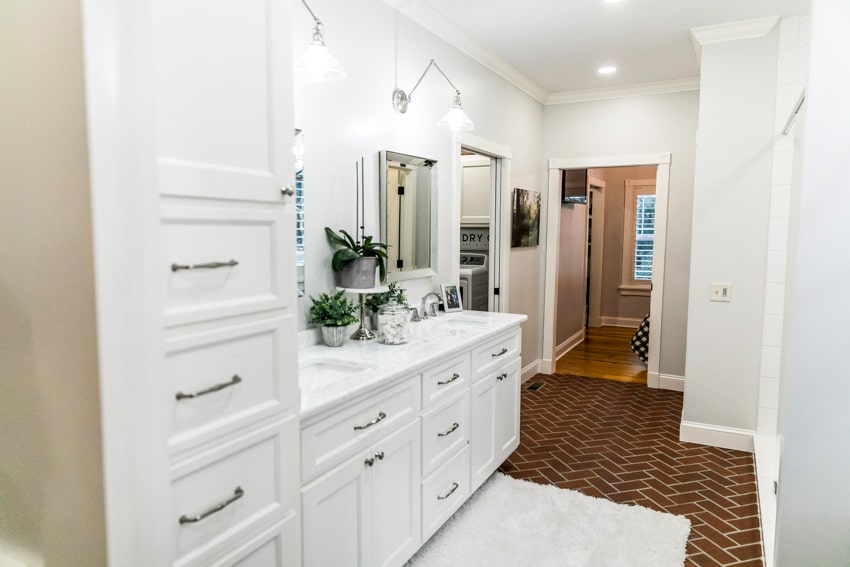
These tiles can be elegantly paired with wooden cabinets and a mosaic wall, which balances each other in aesthetics. They can also be used as a contemporary and sleek addition to the bathroom. In fact, you can mimic the ambiance of a luxury spa just by using them in your bathroom.
Make sure you use the red ones not just for the authentic look but also for the warm hue and inviting vibe. See more types of bathroom tile ideas here.
Terracotta Living Room Tiles
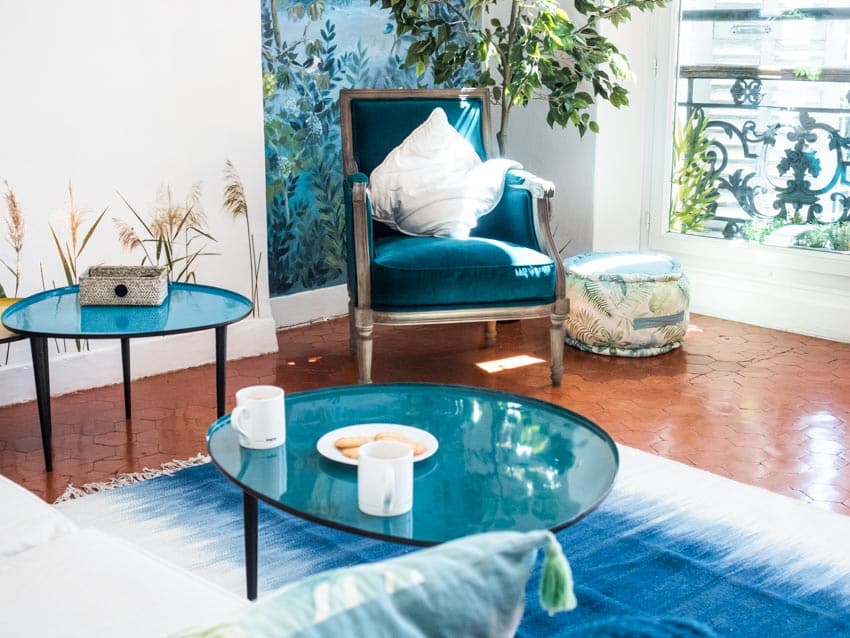
You can even turn your living room into an art exhibit by going all-out authentic with hand-painted ones and matching artistic elements.
You don’t have to use this tiling as flooring, and if you really want to make a stunning first impression, you can use hand-painted ones for a wall accent.
Terracotta Patio Tiles
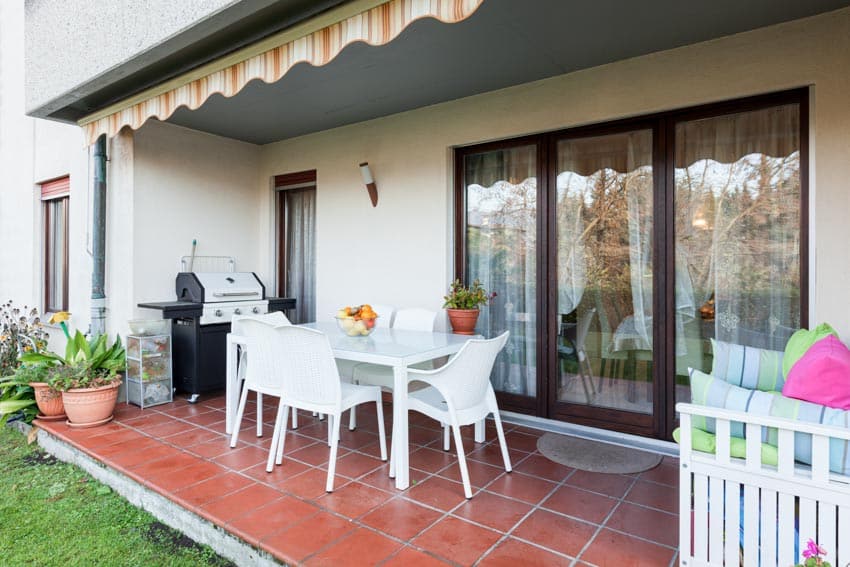
This will be a lot better if your patio is still positioned under the roof to protect the tile floor from rain and other similar elements. Using them in your patio will be a bad idea if you live in a cold climate since these can freeze and crack.
If not, feel free just to make sure that these materials are well-protected through sealing and glazing them so you won’t have to replace them often. See more pictures of Spanish tile patio designs here.
What Colors Go with Terracotta
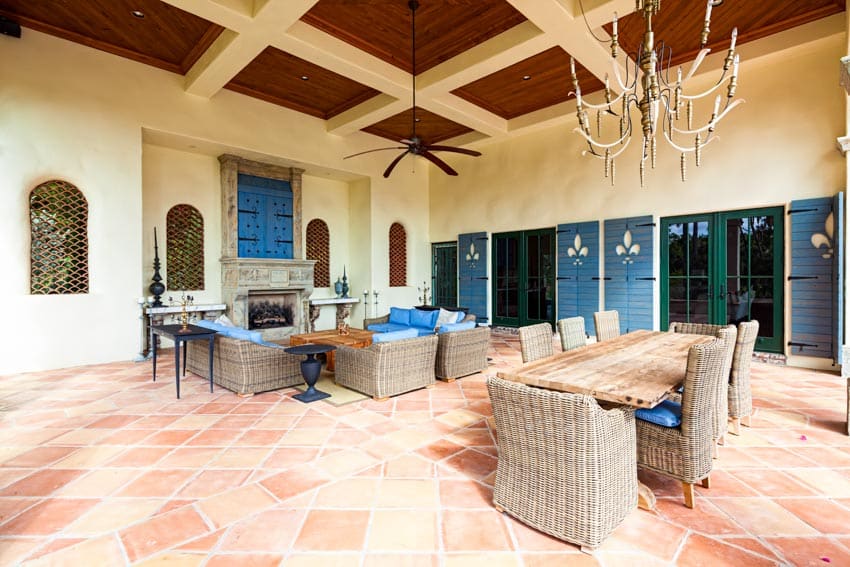
To work on your walls and match them with the flooring, here are some colors and respective paints that would look wonderful with them.
Off-white



Beige, Taupes, & Brown



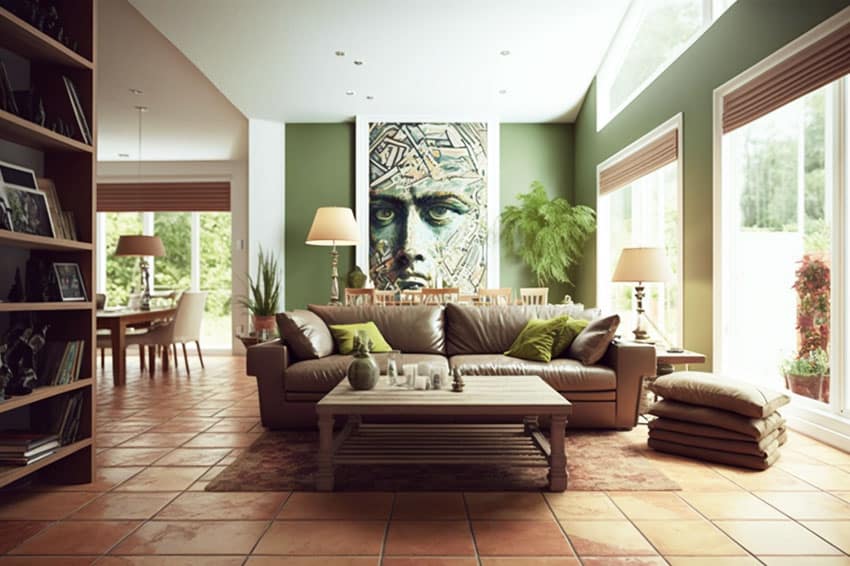
Muted Greens



If you want to be spot on when it comes to matching your tiling with colors in the room, choose the tiling you’re planning to install first. Match them appropriately, especially if you choose bold colors, including white and black.
Tile Grout Colors for Terracotta
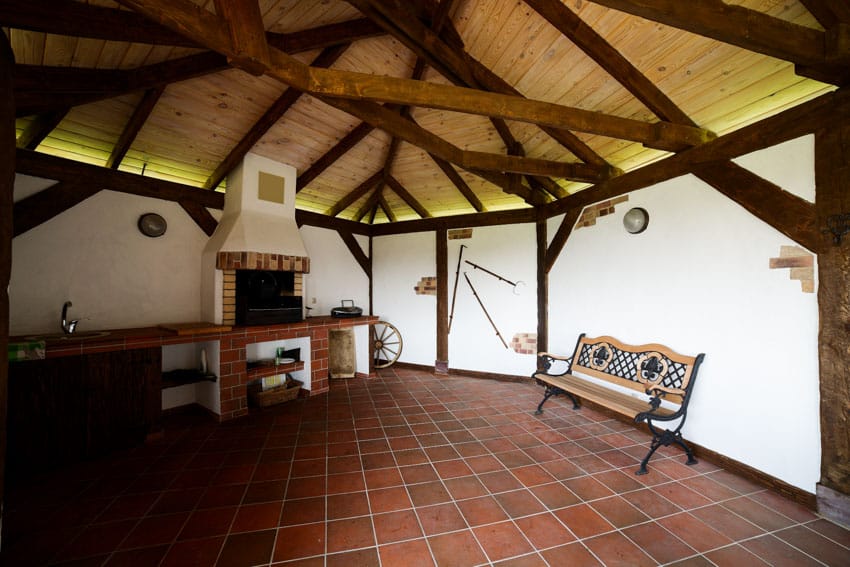
Some of the most common options to consider are the following:
• Earthy tone
• Rose
• Burnt-clay color options
How to Clean Tiles Made of Terracotta
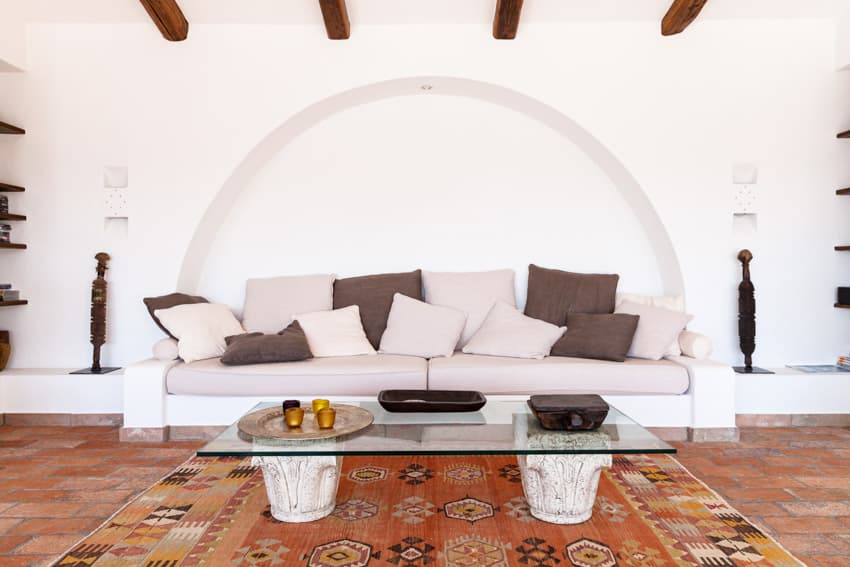
1. Wash the tile flooring with mild dish soap in warm water and scrub lightly with a sponge or mop weekly.
2. Make sure you wrung out both to avoid water excess that can result in water damage.
3. Regularly vacuum the flooring with a soft-bristled brush, but do not use the vacuum attachment.
4. Remove spills as soon as possible to avoid further water damage.
5. Use a neutral cleaner and avoid harsh solutions like those that contain ammonia, vinegar, and acids.
6. Thoroughly rinse and remove any chemical residue from the cleaner used.
7. Make sure to thoroughly dry the tile pieces after cleaning. You can use a dry mop, towel, or rag.
Sealing Baked Earth Tiles

To help you with this sealing task, here are simple tips that are easy enough to follow.
1. Choose the ideal sealant and sealing method for you (You can ask for some advice from experts).
2. When applying the sealant, make sure to protect the baseboards with masking tape.
3. Apply just the right amount of sealant and cover all the necessary areas that need sealing.
4. Make sure to wait until the tile floor is completely cured. This can take up to 72 hours, or just read the instruction that comes with the sealant for the exact number of curing hours.
Two of the types of sealants you can use are the following:
• Wax sealants: These sealants do not soak all the way through the tiling and, in the end, leave residue on the surface. If applied in a high-traffic area, they can get discolored after some time.
• Water-based sealants: Thinner compared to acrylic sealers, these sealants can soak deeper into the tiles and take care of problems and issues with dust particles and discoloration
• Acrylic sealants: Odorless compared to other sealants, acrylic is popular for grouting, jointing, and caulking, and they are also easily paintable and can be used for floor tiles.
Terracotta Vs Saltillo Tile
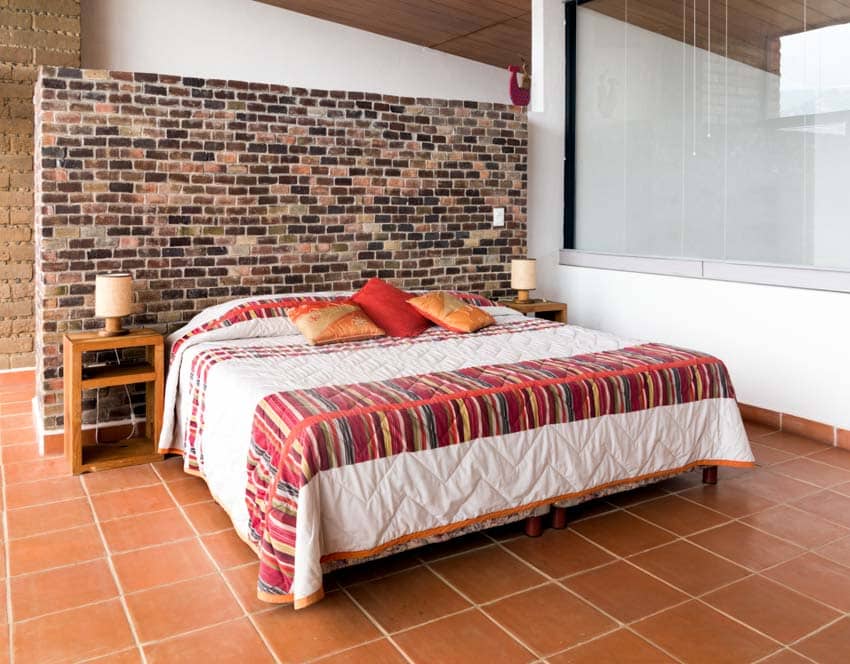
| Aspects to Consider | Saltillo Tiles | Terracotta Tiles |
| Origin | Mexico | All parts of the world |
| Cut style | Handcrafted only | Handcrafted or Machine-cut |
| Shape | Each tile is unique | Much more uniformed for machine-cut |
| Installation | It is a little difficult due to uneven shapes and lines | Easier for machine-cut |
| Variety | Limited | More options to choose from |
Some of the specific characteristics of saltillo tiling include the following:
• Made in Mexico
• Handcrafted and unique in their appearance
• Features earth-toned colors, including naturally occurring red clay
• Made and fired at a relatively low temperature
This material has indoor and outdoor applications, both residential and commercial. They are popular as decorative walls, backsplashes, countertops, and flooring. They can be installed outdoors on your patio, but only if the patio has a roof.
If you’re considering saltillo tile floors for your home, here are the advantages and disadvantages so you can weigh if this is the ideal type of tile flooring for you.
Pros of Saltillo Tiles
• Eco-friendly: Biodegradable and organic, these are made of pure clay compared to other tiling.
• Affordable: They are more cost-effective compared to their alternatives.
• Unique pieces: These are handcrafted one by one, so one tile will be unique and different compared to others.
• Easily conceal dirt: You won’t have to worry about them looking dirty all the time since these can hide dirt well.
• Features rustic and old-world feel: These provide warmth and an inviting feel you will want your home to have. If you want your home to feel traditional and rustic, these tiles will be wonderful to add to your flooring.
Cons of Saltillo Tiles
• Complicated to install: Since these have unique shapes and sizes, they can be difficult to install and might need an expert’s help.
• Uneven and not uniform: Each tile is handmade by an artisan, meaning you might not find any duplicates. While this can be a good thing, it also means that you will also find it hard to match it with other tile pieces.
See more related content in our article about the Spanish style kitchen designs on this page.

